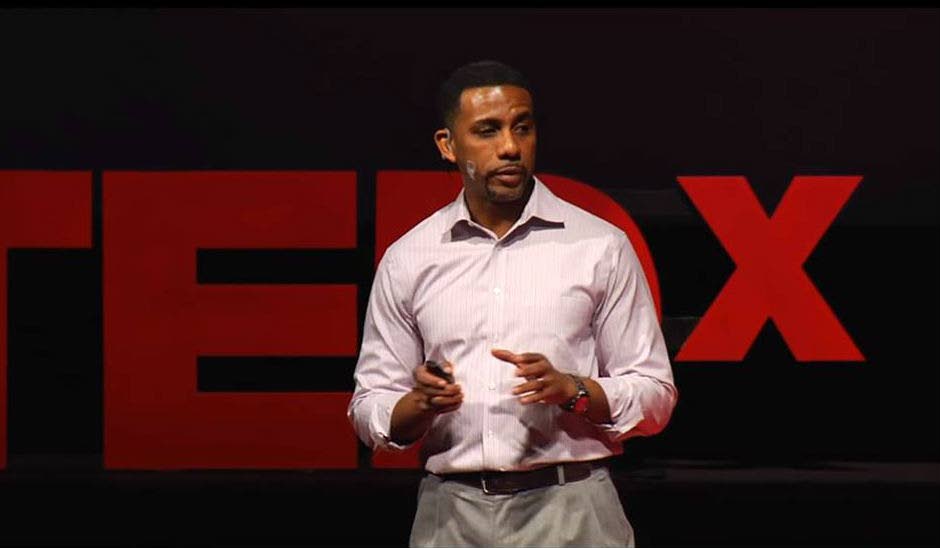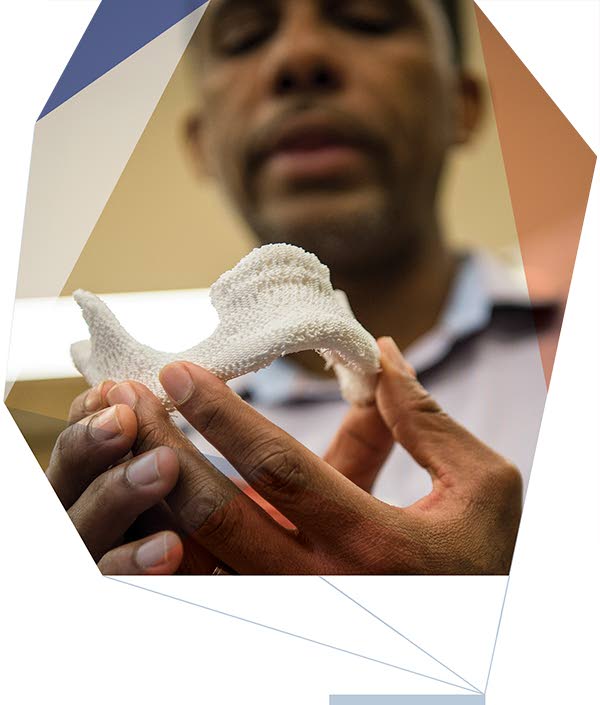Dr Grayson’s stem quest

From building an impressive reputation as a footballer to a distinguished academic tasked with cutting-edge biological research, Trinidadian Dr Warren Grayson has defined himself through excellence both on and off the field.
Last month, Grayson became one of the United States’ most qualified biological engineers with his induction into the American Institute for Medical and Biological Engineering (AIMBE) College of Fellows.
Sunday Newsday spoke to Grayson to learn more about his academic journey, the scope of his research and advice for students who may be considering a career in science.
Grayson, who attended secondary school at Hillview College and later sixth form at Queen’s Royal College to compete in the InterCol football tournament, says his passion for learning and science was nurtured by relatives who were professionals themselves.

An alumnus of the University of the West Indies (UWI), St Augustine, Grayson says he took part in extracurricular activities, including calypso competitions and forming UWI’s first female football team. But academics were always his first priority.
While he was originally interested in chemical engineering and planned a career in the energy sector, a football injury changed his career trajectory.
“After high school, I entered into a chemical and process engineering degree at UWI, but was still playing club football for Malvern FC when I injured myself in training. A subsequent visit to the orthopaedic surgeon Dr Terry Ali made me realise that I did not want to work in the energy industry. I wanted to do something where I could impact people’s health.
“I finished the undergraduate degree in chemical engineering, but worked to find a way into the medical field. When I learned about biomedical engineering, I realised that it combined the two things I liked: engineering and medicine.”
This upset to his athletic performance became one of the best things to happen to Grayson, as he went on to earn his doctorate in biomedical engineering at Florida State University and began a decorated academic career, eventually working at the prestigious Johns Hopkins School of Medicine in Baltimore, Maryland.
Grayson said these successes did not come without their fair share of challenges, especially when migrating to the US, but credited his perseverance and dedication to his studies.
“Leaving Trinidad was difficult. Going to a place with no family, friends, or support system has been the most difficult challenge that I have faced. Adjusting to classes was not difficult, beyond the usual academic challenge. I strongly believed in my ability to do well in any class regardless of the competition.
“I think many people underestimate how difficult the culture shock can be. However, many Trinidadian students go away to college every year at both the undergraduate and graduate levels, and are successful. I think it is important to develop coping strategies.”

SCREENSHOT
Officially titled musculoskeletal tissue engineering, Grayson’s research involves regenerating “missing tissues” from patients who have undergone dramatic changes in health, such as cancer surgery or who have congenital abnormalities, in which portions of muscle mass have been lost and cannot be regained spontaneously.
“Our team combines stem cells with advanced biomaterials and we seek to understand how to modify the environmental conditions to enable the cells to form new, functional tissues that would integrate with what is left of the native tissues.
“It is distinct from gene editing, but can potentially work complementarily with gene editing if the stem cells taken from the patient has some genetic abnormality.”
Grayson, 43, said while major breakthroughs can take many years to achieve, his team at Johns Hopkins has made steady progress in its research through doing bone regeneration studies in mice and pigs.
Throughout this journey, Grayson credits his family for their support and understanding, especially during his graduate studies when his siblings supported him financially, and said his success was a “team effort” that kept him grounded in success.

Grayson has been featured as a speaker at a 2016 Tedx Talk in Baltimore on regenerative medicine. His talk emphasised not only the scientific aspect of his research but also the physical, social and emotional well-being of patients.
And in a 2016 article, Facing the Future, in the Johns Hopkins Whiting School of Engineering magazine, Grayson speaks on the techniques of reconstructing a person’s face and his ground-breaking research received high acclaim.
“Grayson developed a process that for the first time grew a precisely shaped piece of human jaw bone outside the body. He did this by creating a machine-milled, jaw-shaped scaffold made of bone from cows’ knees, coating it with human stem cells, and then incubating it in a small, boxy device called a bioreactor, which fed nutrients and oxygen to the stem cells while moulding the fresh bone to the proper shape,” the magazine stated. “His paper on the work created a lot of excitement among tissue engineers...”.
At that time, Grayson and his team planned to create biodegradable plastic scaffolds for use in facial regeneration. Grayson’s work has been featured in The New York Times and Scientific American, and a biotech startup EpiBone was launched to commercialise this work, the article revealed.
Asked what advice he had for students considering a career in scientific research, Grayson encouraged more young people to believe in their ability to make a positive contribution. He said while it may seem distant, it is possible with the right attitude, and said he is driven by a desire to see more Caribbean people getting involved in science.
“I hope that my example would help to inspire greater participation in science and technology. It would be wonderful if, as a society, we dedicate more resources toward harnessing the natural creativity and intelligence of our people – also black people in the US, who make up roughly 12 per cent of the population but less than two per cent of scientists and engineers.”

Comments
"Dr Grayson’s stem quest"